Lakeside ~ Eglarooze, Rame Peninsula, Cornwall.
Client : Private.

Cobland Mill was built sometime in the early 19th century. It had a sixteen foot diameter overshot water wheel that was used for grinding grain. In the late 19th century the mill was abandoned after which it was used for sheep shearing when it then became known as ‘Lake Barn’. The name ‘Eglarooze’ means ‘chapel on the promontory’ and it refers to a chapel dedicated to St. Winnows that was sited somewhere between Cobland Mill and ‘Lower Eglarooze’ and ‘Higher Eglarooze’ (now called St. Winnows) immediately to the north. The chapel was owned by the priors of St. Germans but fell into disuse after the abolition of the monasteries by Henry VIII in 1539. Small pieces of the chapel have been found at Cobland Mill. The fields surrounding the mill are now owned by the Duchy of Cornwall but from the early 18th century they were part of the Port Eliot Estate. Cobland Mill was bought as an abandoned ruin from the Port Eliot Estate in the year 2000 and then converted into residential use. It is Grade II listed. Cobland Mill had a new winery built across the road as a commercial business venture and operated from 2006 until it ceased operations in 2012. Later Cobland Mill was sold and the winery was sold separately and converted into residential use. It was then named Lakeside. We had previously carried out all the stone cladding to the building when it it was the winery. Lakeside is built into a dam wall that retains a lake.
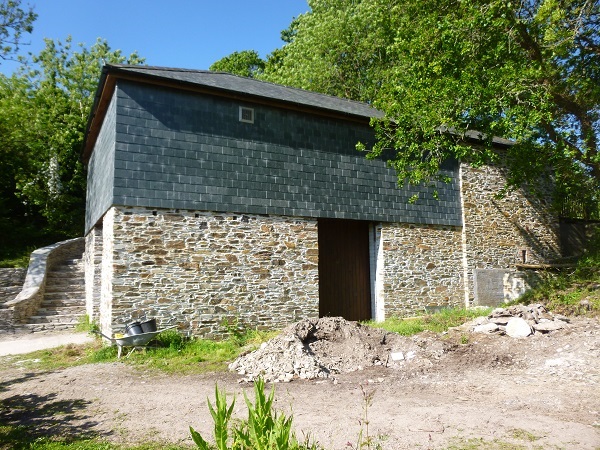
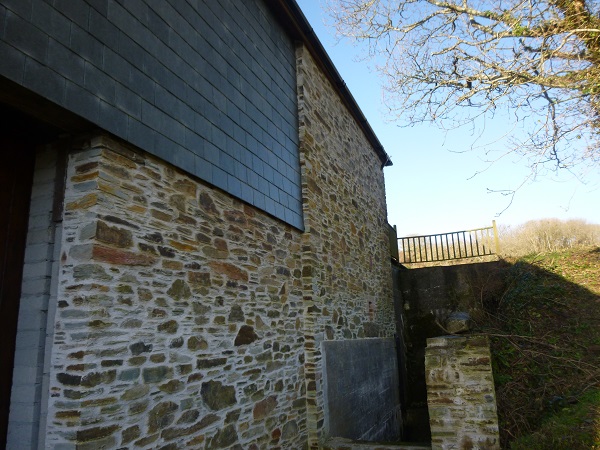
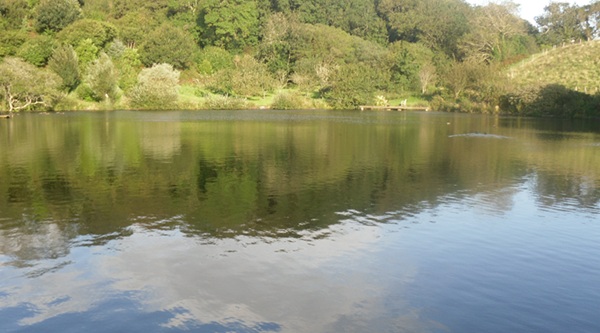
During the 18th century a natural lake opposite the Cobland mill existed at the confluence of the streams coming from the Hendra Valley to the north and the Triffle Valley to the south. A reservoir utilising this water was first proposed in November 1883 to serve the parishes of St. Germans, Sheviock and Anthony but it was never built. After the First World War a larger facility was proposed because of the growth in population of the nearby town of Torpoint. A dam was completed in 1922 and the lake which it created held five million gallons of water carried through two large iron pipes down the valley to a pumping station near to Anthony House. The reservoir was abandoned in 1954 and drained. It was bought by the owners who were converting the mill in 2000 and they reinstated the old reservoir into the amenity lake that you see today.
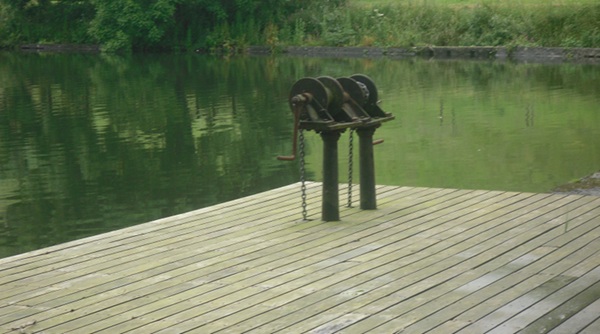
The top floor of Lakeside, looks out over the lake.
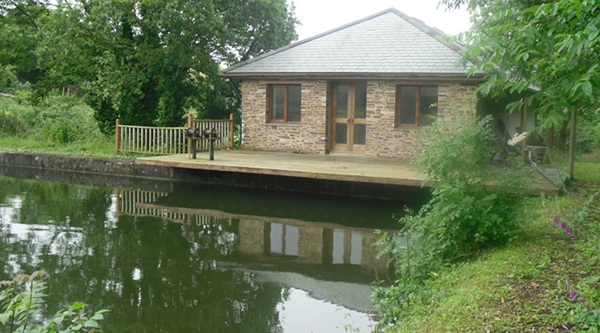
Whilst Lakeside was being converted into residential use, we were asked to form a new apron leading into the property. This was going to be constructed using silver grey Cornish granite. When we arrived a concrete base had already been laid down for us, and the first load of granite setts were dropped off.
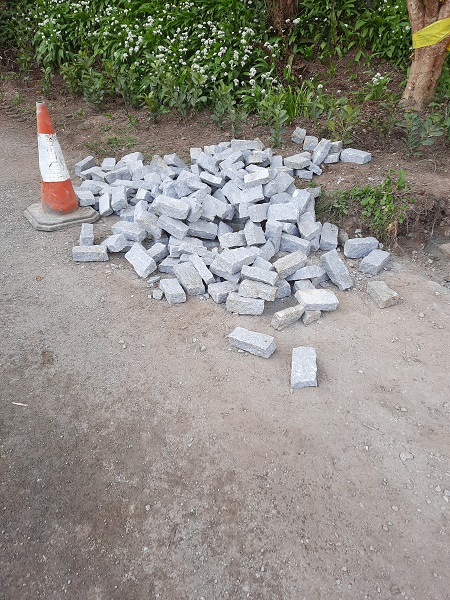
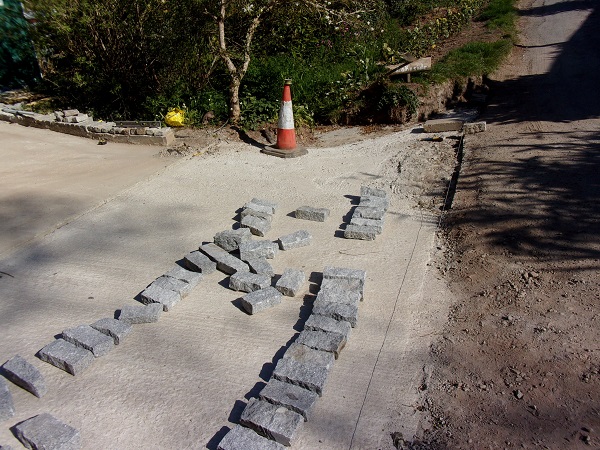
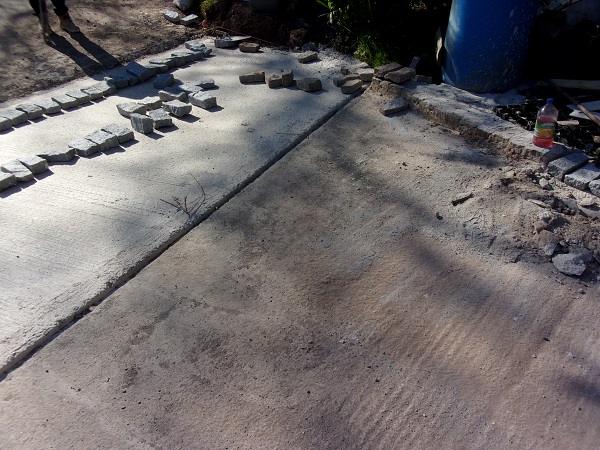
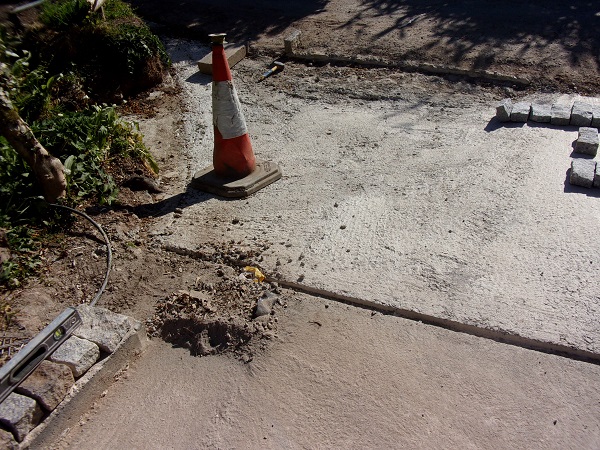
So, the first thing we did was to set out the bottom edge of the apron where it joined onto the road. The granite setts were backed up with concrete and this edging would go all around the apron area. The tarmac on the road would be re-instated to meet up with the new levels after the apron was completed.
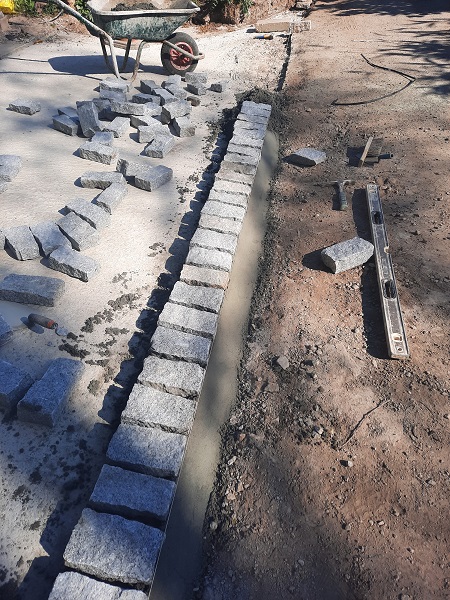
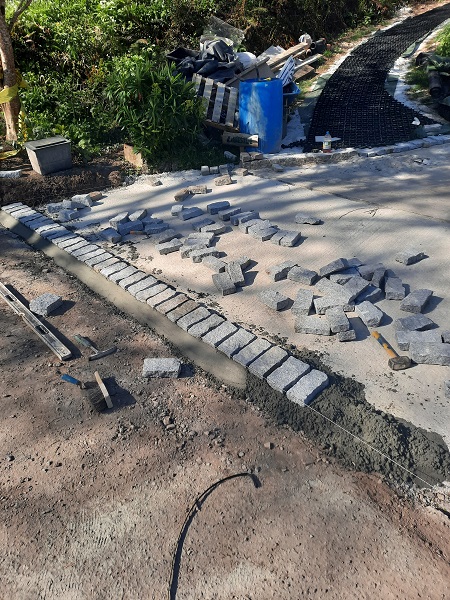
When the bottom edge was laid in we started laying the setts for the apron, working from the bottom up.
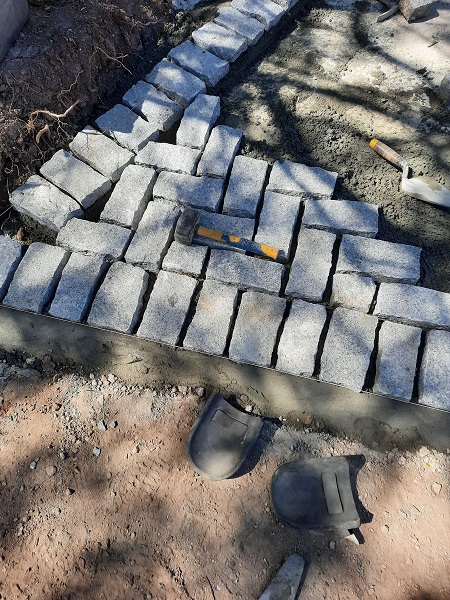

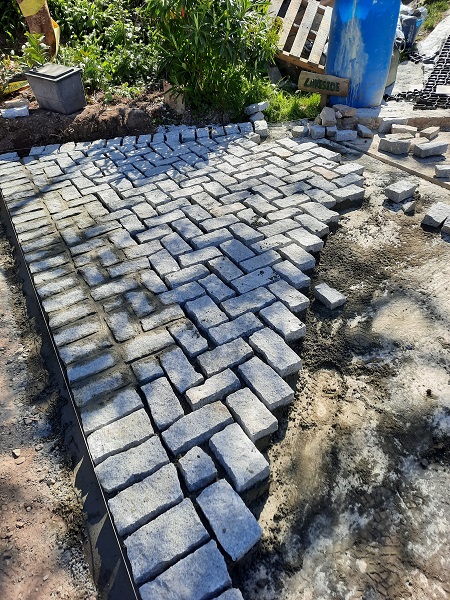
We continued with the setts all along the bottom edge from one end to the other. These were laid down on a continuous screed of sand and cement consisting of a sharp concreting sand.
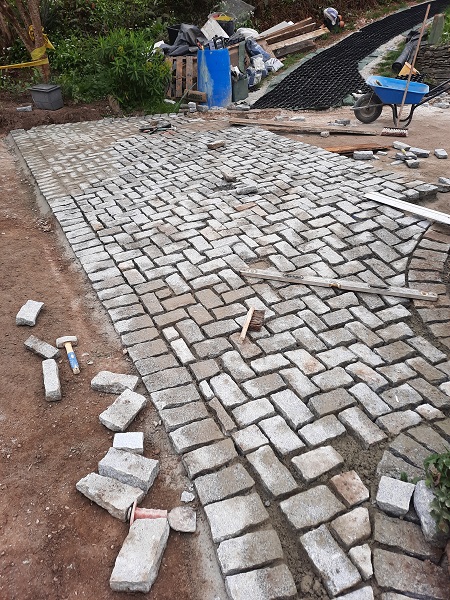
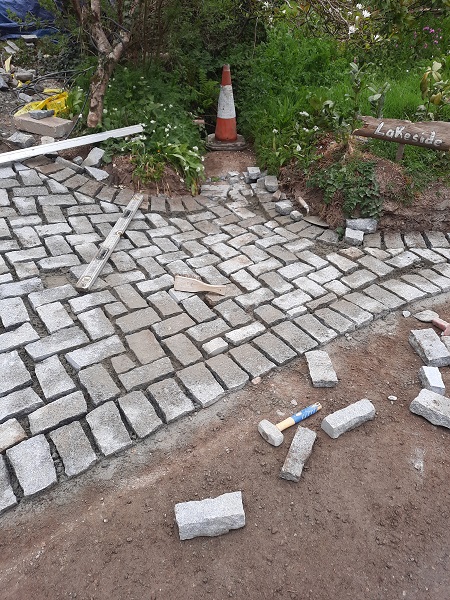
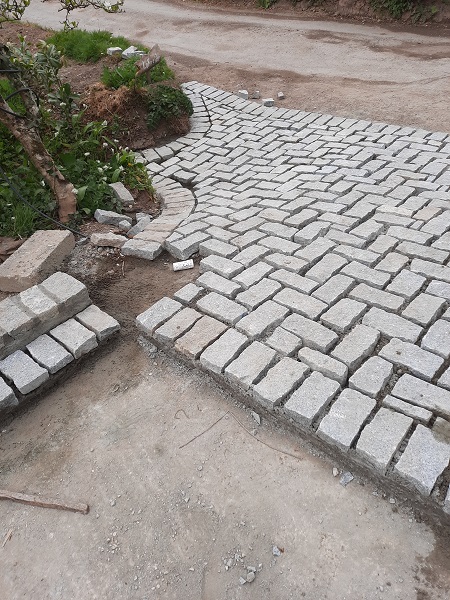
We put in the rest of the edgings to bring the apron into as we were coming up.
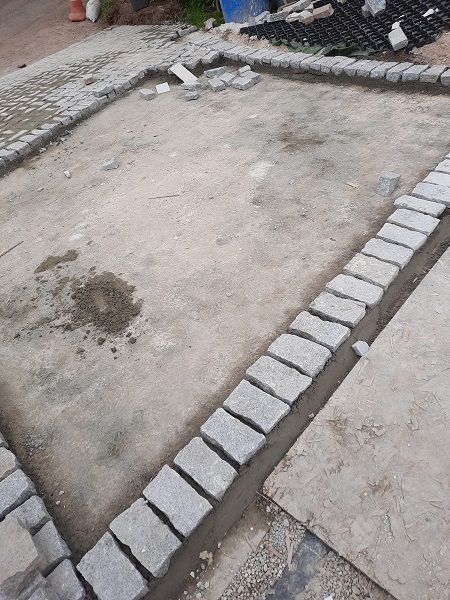
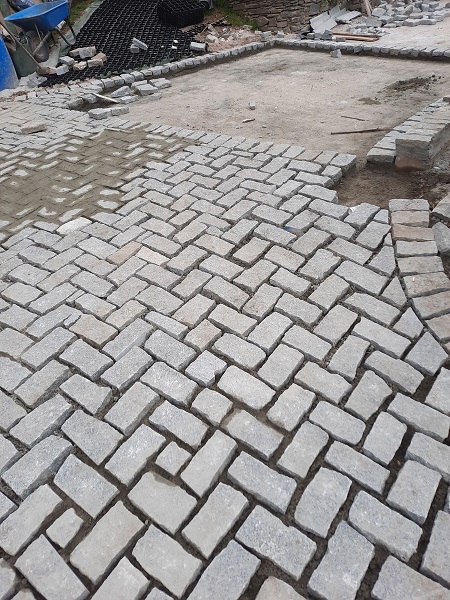
And before long we had most of the setts laid down.
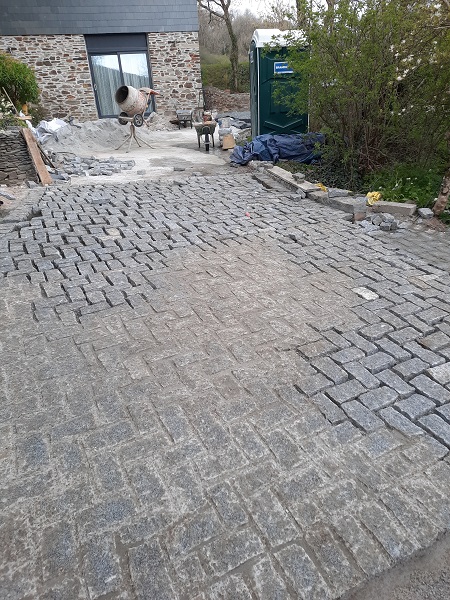
We then started pointing all the joints in using a sand and cement mortar.
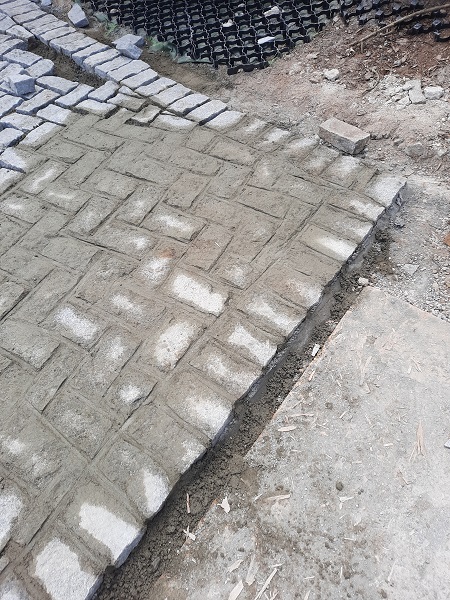
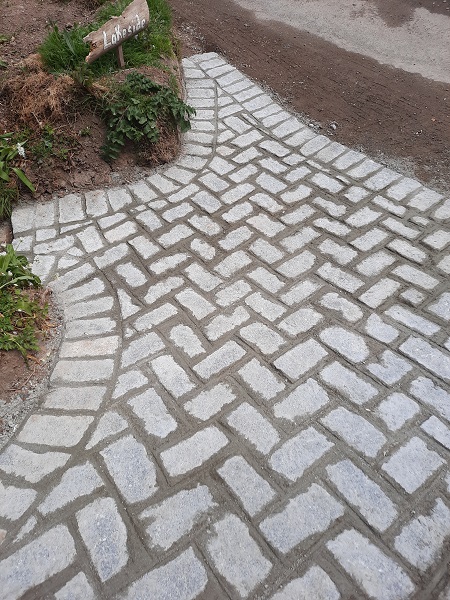
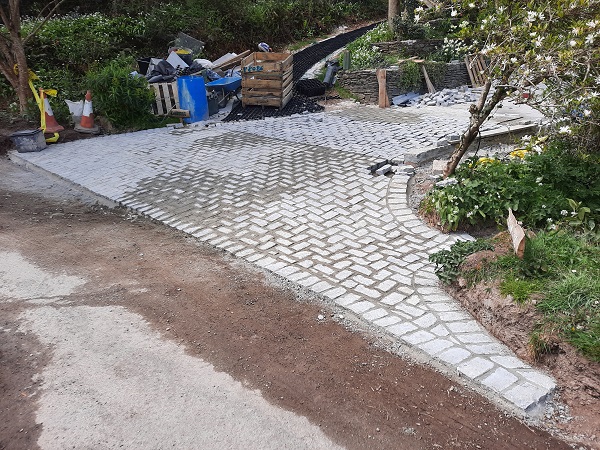
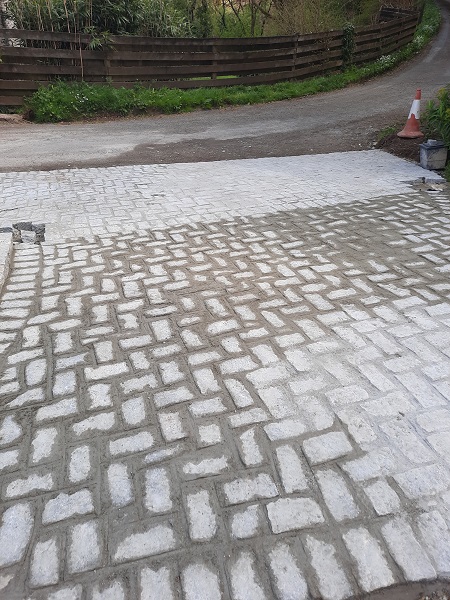
When all that pointing was finished, it was time to give the whole apron a really good clean down.
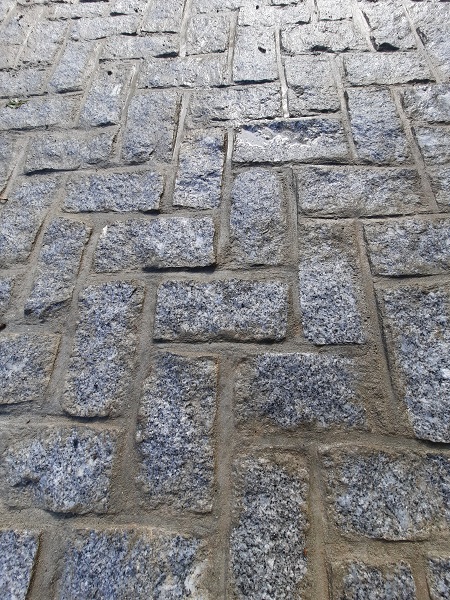
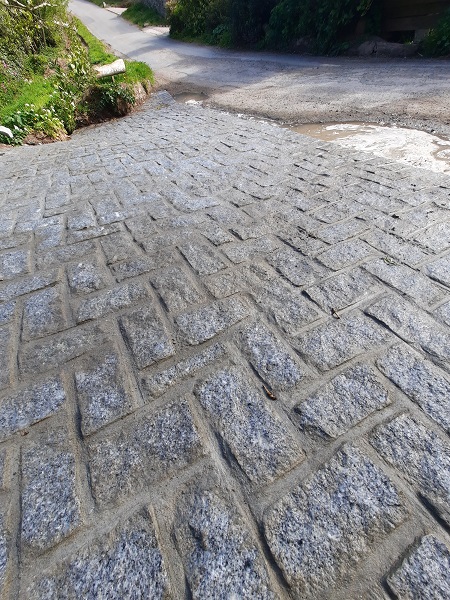
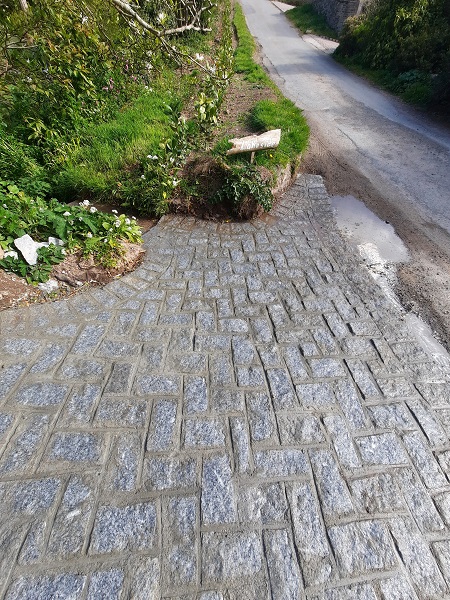
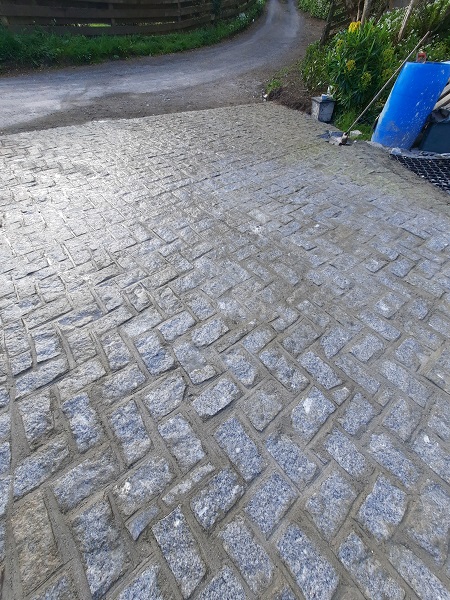
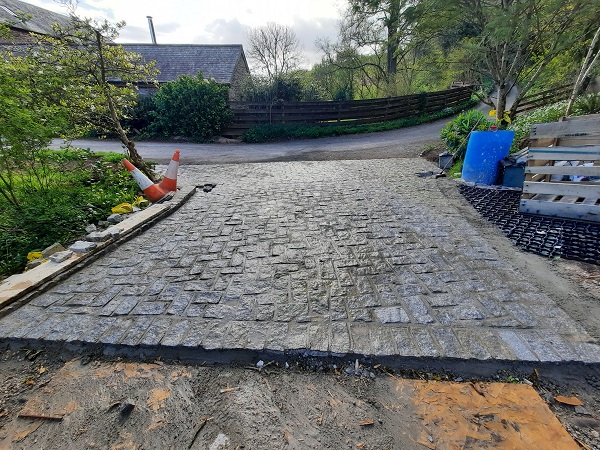
The granite setts were laid down in a herringbone pattern, a strong interlocking pattern which is generally used for all trafficked areas such as driveways.


